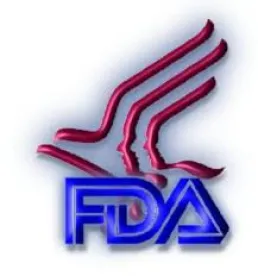Yesterday we started off our year-end series of blog posts with the first part of a review of FDA’s actions for 2017 in the therapeutic products space. Part 1 recapped Commissioner Gottlieb’s initiative to tackle drug competition issues, with the end goal of affecting drug prices, as well as current figures related to this year’s new drug and biologic approvals. A large proportion of those new products took advantage of the Breakthrough Therapy program and other expedited development/review pathways. Today we’ll begin where we left off and consider how the newest expedited review pathway, the RMAT Designation program, is doing one year after its creation by Congress.
Regenerative Medicine’s RMAT Designation Is the New Kid in Town
Because Congress recognized that personalized medicine was trending toward the use of modified autologous immune cells (like CAR-T therapies highlighted in Part 1 of this year-in-review post), stem cells, homologous tissues, and even mini-organs, the Cures Act created a new expedited pathway for what are now called Regenerative Medicine Advanced Therapies (see our previous post here). FDA quickly implemented this new pathway through the RMAT Designation Program, formally announced in March 2017. The RMAT Designation has been extremely popular, with at least 11 designations granted out of 31 reviewed by FDA as of mid-November, when the director of the Center for Biologics Evaluation and Research updated the public on the program at a conference in Washington, D.C. Expanding upon that congressional intent, Commissioner Gottlieb was forthright about the fact that gene therapy products may also be eligible to be treated as RMATs even though they’re not specifically mentioned in the Cures Act definition. The Agency has set forth this policy in a draft guidance and Dr. Gottlieb recently testified about it on Capitol Hill during his progress reports on the 1-year anniversary of the Cures Act (see, e.g., here).
We also predicted in our year-end post for 2015 that a watershed moment was coming for the human cells, tissue, and cellular and tissue-based product (HCT/P) industry. While we were wrong that such a moment would happen in 2016, it does seem to have happened this year. In August 2017, Dr. Gottlieb took a strong position about the need to police “unscrupulous” stem cell clinics that may be peddling in snake-oil treatments for Alzheimer’s and other debilitating diseases for which few approved therapeutic options are available. The long-awaited policy announcement came with two high-profile enforcement actions and was followed by the release of several important guidance documents for the HCT/P industry in mid-November.
At the same time, FDA also released two draft guidance documents aimed at advancing regenerative medicine as mandated by the Cures Act. The Agency announced the release of this “suite” of regenerative medicine guidance documents in November as ushering in a Comprehensive Policy Framework for the field. Between the administrative and fundraising benefits that can now be tapped using the new RMAT Designation and those RMAT guidance documents – entitled “Expedited Programs for Regenerative Medicine Therapies for Serious Conditions” and “Evaluation of Devices Used with Regenerative Medicine Advanced Therapies” – companies and researchers working in this exciting area had a lot to talk about this year.
And Finally – Some Observations on Enforcement in Drugs and Biologics
We’ve noted above a very important development for HCT/P developers and researchers working in the regenerative medicine space: FDA is clearly going to take more aggressive enforcement action against rogue stem cell clinics. That was significant enforcement news after many years of inaction by the Agency in the face of a burgeoning marketplace for unapproved and potentially very risky cellular products, many of which are promoted directly to consumers. But when it comes to the Agency’s enforcement activities in more traditional drug and biological industries under the Federal Food, Drug, and Cosmetic Act (FFDCA), it was business as usual with upticks in certain areas based on recent Agency priorities, such as in the drug compounding space due to ongoing implementation of and inspections based on the Drug Quality and Security Act (DQSA), now four years old. Indeed, the DQSA/compounding quality did receive significant attention from Commissioner Gottlieb during his first six months, including as a subject of one of his numerous public statements in September.
Some important regulatory enforcement trends worth noting this year include:
- Data integrity problems for human drug products, especially at foreign facilities, continued to be a high priority enforcement area for the Agency, as we discussed in our 2016 overview blog post. In a public presentation made on December 6, 2017, Donald Ashley, the director of CDER’s Office of Compliance (OCE), reported that the Office of Manufacturing Quality within OCE had issued 57 Warning Letters as of November 1, 2017 and created 47 new Import Alerts. Many of these enforcement actions were the result of serious violations of good manufacturing practices (GMPs), which included lack of data integrity and in some cases, outright falsification or destruction of documents. U.S. firms have also become more of a focus of data integrity deficiencies in recent years: consider the fact that no U.S. drug manufacturers had such violations cited in 2014 GMP-related Warning Letters, whereas now a majority of GMP-related Warning Letters issued to U.S. firms include some form of data integrity violation.
- The Office of Prescription Drug Promotion’s issuance of enforcement letters related to violative prescription drug advertising and other promotional vehicles hit a remarkable low, with only 3 letters during this calendar year as of December 15, 2017. In comparison, during 2016 OPDP issued a total of 11 warning or untitled letters; a total of 9 in 2015; 10 in 2014; and 24 in 2013. This trend likely can be attributed to several different factors, including drug companies’ and their ad agencies’ increased understanding of the regulatory requirements for prescription drug promotion. But it also likely signals that OPDP is in a state of flux as the Agency’s off-label policies are reexamined under Commissioner Gottlieb’s leadership. We would note, however, that many OPDP requirements have nothing to do with off-label speech. Companies should not become lackadaisical when it comes to policies and procedures related to their advertising compliance.
- As alluded to above, FDA inspections of traditional compounders and outsourcing facilities continue be very high priority as the Agency seeks to reform the drug compounding industry under the congressional mandate that is the DQSA. Compliance Director Ashley’s year-end presentation (see above) reported that, for Fiscal 2017 (year ended Sept. 30, 2017) the Office of Unapproved Drugs and Labeling Compliance conducted 141 compounding inspections; issued 62 Warning Letters to compounders; brought 2 injunctions against compounders (here and here); and oversaw 41 recall events involving compounded drugs. These reported data do not differentiate between traditional compounders and outsourcing facilities.
In the coming days, we’ll be releasing our FDA 2017 Year in Review posts for digital health and medical devices, including diagnostics. Stay tuned for more as you prepare to usher in 2018!




 />i
/>i

